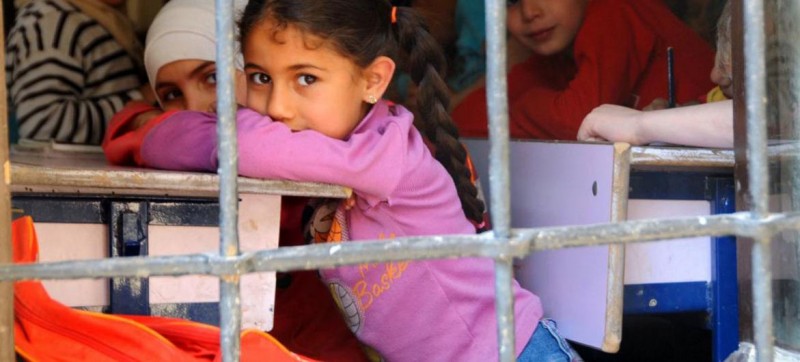Children look through a window with bars from inside their classroom. Education is a fundamental human right and “an essential driver for achieving peace and sustainable development”, Secretary-General António Guterres underscored on Friday, the International Day to Protect Education from attack. “Unfortunately, this right continues to fall under attack, especially in conflict-affected areas,” he said in a statement commemorating the day. “Classrooms must remain places of peace and learning”.
Attacks must stop ‘immediately’
In 2020 and 2021, the Global Coalition to Protect Education from Attack reported over 5,000 assaults and cases of military use of schools and universities.
And more than 9,000 students and educators were killed, abducted, arbitrarily arrested, or injured, the majority of whom were women and girls.
“These attacks deprive millions of vulnerable learners from accessing education and increase the risk of sexual violence and child recruitment by armed groups. They must stop immediately,” continued the UN chief.
Unite for safe education
Mr. Guterres welcomed steps taken by many countries to protect educational institutions and urged “all Member States to endorse and implement the Safe Schools Declaration”.
“International Law and International Humanitarian Law obligations must be respected. We must pursue monitoring, investigate all attacks and hold perpetrators to account,” spelled out the top UN official.
In marking the international day and in the lead up to the Transforming Education Summit, which will be convened at UN Headquarters in New York from16 to 19 September, he encouraged everyone to “act together to guarantee safe education for all”.
Startling facts
- Attacks on education and military use of schools increased by one-third in 2020 compared to 2019, and maintained the same rate in 2021.
- Six attacks on education or incidents of military use occurred each day.
- Explosive weapons were used in around one-fifth of all reported attacks on education during the reporting period.
Raising awareness
The General Assembly unanimously established the day, calling on the UN Educational, Scientific and Cultural Organization (UNESCO) and UN Children’s Fund (UNICEF) to raise awareness of the plight of millions of children living in countries affected by conflict.
By its resolution, the Assembly affirmed that Governments have the primary responsibility to provide protection and ensure inclusive and equitable quality education at all levels to all learners, especially those in vulnerable situations.
They also emphasized the need to intensify efforts and increase funding to promote safe and protective school environments in humanitarian emergencies by taking all feasible measures to protect schools, learners and educational personnel from attack, refrain from actions that impede children’s access to education, and facilitate access to education in situations of armed conflict.




Comments are closed.